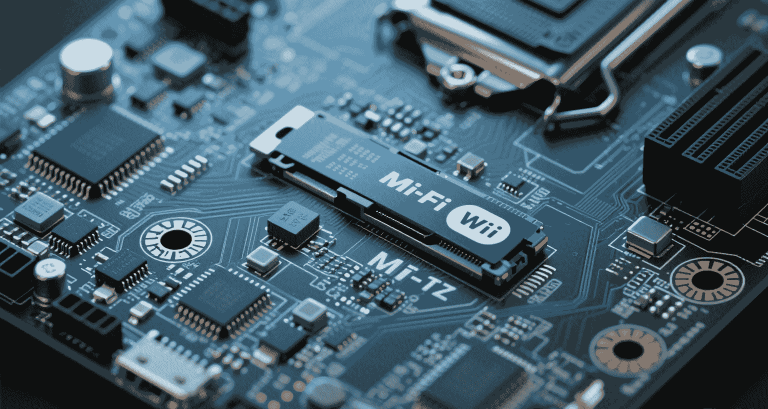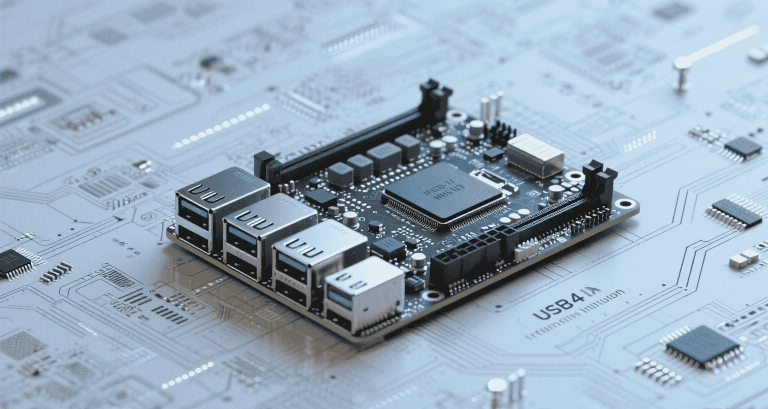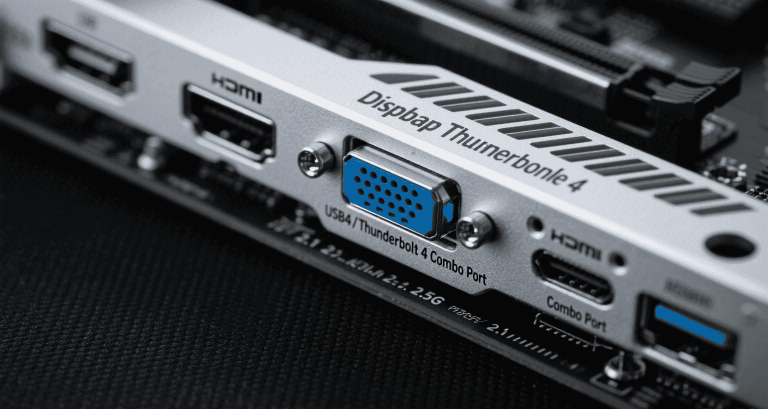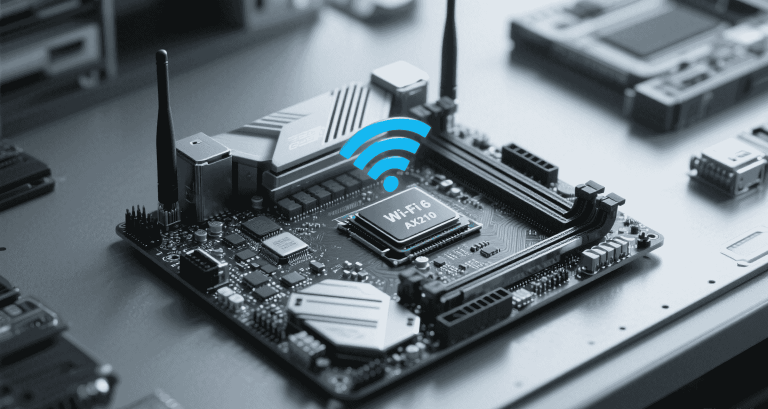Intel Celeron N100: Efficient Processing for Embedded and Low-Power Systems
Table of Contents
Introduction and Market Positioning
Why read this: The Intel Celeron N100 brings desktop-class I/O, modern media blocks, and excellent idle behavior to the sub-10-watt design envelope. In Mini-ITX and embedded builds, it unlocks reliable, silent systems with measurable savings in energy and BOM complexity.
Engineers reach for N100 when they need a dependable appliance brain: router/firewall nodes, NAS controllers, signage players, thin clients, or edge inference launchpads that must stay cool, quiet, and online all year.
Overview of the Alder Lake-N Platform
Alder Lake-N refactors Intel’s efficiency cores (Gracemont) into a simple, fully integrated SoC. The N100 SKU exposes practical I/O (NVMe, SATA via board choice, multiple display paths) without the overhead of performance cores.
N100’s Target Use Cases
- Home labs & NAS: low noise, low idle; sufficient headroom for ZFS-lite or Btrfs with SSDs.
- Thin clients & kiosks: dual display, modern codec decode, sealed enclosures possible.
- Firewall appliances: stable throughput with 2.5GbE NICs; modest thermals.
Why It Matters in Low-Wattage System Design
Compared with older Atom/Celeron generations, the N100’s efficiency cores deliver better perf/clock and wider media support, cutting fan needs and PSU sizes. This translates to simpler cases, fewer moving parts, and lower TCO.
CPU Microarchitecture and SoC Integration
The N100 implements four Gracemont efficiency cores (4C/4T) on Intel 7. There’s no big.LITTLE split: the simplicity favors predictable thermal behavior and deterministic scheduling—valuable in embedded control and steady workloads.
Gracemont E-Cores: Design and Capabilities
- Out-of-order E-cores: better IPC than prior Atom lines at similar or lower power.
- ISA coverage: modern integer/fp paths; vector support adequate for media assist and light inference.
Intel 7 Process Node Efficiency
Refined process and power gating enable deep C-states and rapid residency changes. In practice, well-tuned systems drop to single-digit wattage at idle while resuming to full clocks quickly for UI or network bursts.
Fully Integrated SoC: PCH, Memory, I/O
Memory controller, display engine, PCIe root, and southbridge functions live on-die. This reduces board layers and trace length—key advantages for Mini-ITX routing density and EMI management.
Performance Characteristics and Tuning
Raw scores won’t rival desktop parts, but the N100’s consistency in sustained light-to-moderate load is its edge. For embedded pipelines (brokers, small databases, web frontends) it offers responsive compute with a tiny thermal footprint.
Benchmark Comparisons: Cinebench, Geekbench
| Metric (indicative) | N100 | Notes |
|---|---|---|
| Cinebench R23 Multi | ~2,800–3,300 | Varies by PL1/PL2 and cooling |
| Geekbench 6 Multi | ~4,000–4,800 | Memory config impacts scores |
PL1/PL2 Adjustment for Boost Behavior
BIOS-exposed power limits (PL1 sustained, PL2 short-term) govern burst clocks. Raising PL2 improves snappiness but increases heat density in small cases. Production appliances generally cap PL1 near stock and trim PL2 slightly to avoid fan spikes.
Practical knobs
- Enable C-states and ASPM; they deliver the largest idle savings.
- Avoid aggressive undervolts without validation; transient faults can be silent.
CPU Clock, Burst, and Sustained Loads
Expect brief peak clocks on user interaction, then a quick settle to sustained levels defined by PL1 and cooling. For encode/compile tasks, stable throughput beats short bursts—design your thermals for the long run.
Integrated Graphics and Media Acceleration
The N100’s Gen12.2 UHD graphics (24 EUs class) provides modern media blocks to accelerate typical HTPC and signage tasks while keeping CPU utilization low.
Gen12.2 UHD Graphics: 24 EUs
Balanced EU count supports lightweight 3D desktops and video composition. For GUI fluidity, pair with dual-channel memory.
AV1, VP9, and HEVC Decode Support
- Hardware decode: AV1, VP9, HEVC/H.265, AVC/H.264 (profiles vary by driver/OS).
- Transcode: Low-bitrate, home streaming use is realistic with VA-API/Quick Sync acceleration.
Dual/Triple Display Outputs and HTPC Suitability
Most N100 boards/mini-PCs expose HDMI + DP (sometimes USB-C DP-Alt). 4K60 output is comfortable for playback; animation-heavy 4K desktops benefit from conservative compositor settings.
Memory and Storage Support
Memory bandwidth drives both CPU responsiveness and iGPU headroom. Storage choice determines idle draw and thermals—especially in sealed or near-silent enclosures.
DDR4 vs LPDDR5 Performance and Compatibility
| Memory | Pros | Cons | Notes |
|---|---|---|---|
| DDR4 (UDIMM/SODIMM) | Common, inexpensive | Slightly lower bandwidth | Great for upgradable ITX boards |
| LPDDR5 (soldered) | Higher bandwidth, lower idle | Not upgradable | Popular in mini-PCs |
NVMe vs SATA vs eMMC for Power and Speed
- NVMe: best responsiveness; idle ~0.5–1.5 W; ensure heatsink in tight cases.
- SATA SSD: very low idle draw, consistent temps; perfect for appliances.
- eMMC: adequate for kiosk/IoT images; limited capacity and endurance.
Thermal Behavior of Storage in Fanless Builds
NVMe SSDs can become the hottest component under sustained writes. If fanless, add a thermal pad to the shell or spec drives with conservative controllers.
Power Consumption and Thermal Engineering
Design around idle first, then validate sustained load. The N100 platform excels at sipping power between bursts—your job is to preserve that advantage with PSU choice, firmware, and airflow.
Real-World Idle and Load Power: 6 W TDP vs ~14 W Actual
“6 W” is a reference TDP; whole-system numbers depend on board and peripherals. Typical, well-tuned Mini-ITX systems idle in the 5–10 W range (NVMe + 1 SATA SSD), rising with NICs, Wi-Fi, and RGB controllers.
Passive Cooling Success and Heatsink Sizing
Passive profile
- Large fin stack oriented vertically; thermal bridge to case if possible.
- SoC steady-state 50–60 °C in 22–25 °C ambient is attainable without throttling.
Active assist
- 40–60 mm fan at 700–1000 RPM over SoC/VRM zone reduces hotspot risk.
- Tie curves to VRM or SoC sensors if firmware exposes them.
PSU Influence on Power Draw
Low-load efficiency dominates. SFX Gold/Platinum or high-quality DC-in boards avoid wasting 3–6 W at idle versus oversized ATX units.
Embedded System and Fanless Deployments
N100 platforms thrive in sealed or low-airflow boxes with clear power and I/O planning. Firmware hygiene (watchdog, RTC wake, resume-on-power) is just as important as heatsink choice.
Mini-PCs and Routers: OPNsense, pfSense, Untangle
- 2.5GbE NICs pair well; verify driver maturity for your distribution.
- Enable Suricata/Snort conservatively; DPI/IDS raises sustained load and temps.
Thin Clients and Kiosk Devices
Dual display, hardware decode, and solid idle numbers make N100 thin clients pleasant at the edge. Choose LPDDR5 mini-PCs for the smallest thermal footprint when upgradability isn’t required.
Reliability in 24/7 Operation Scenarios
- Derate targets by ~10–20% from thermal limits in fanless installs.
- Schedule periodic SMART checks and log SoC/VRM temps to catch drift.
Comparison Against Alternatives
When weighing N100 against Jasper Lake (N5105/N6005) or ARM SBCs, look beyond peak benchmarks to idle draw, driver stack maturity, and I/O flexibility.
Intel N100 vs N5105, N6005
| Aspect | N100 (ADL-N) | N5105/N6005 (Jasper) |
|---|---|---|
| Process | Intel 7 | 10 nm |
| CPU uArch | Gracemont E-cores | Tremont |
| iGPU | Gen12.2 UHD | Gen11-class UHD |
| Idle behavior | Excellent C-state residency | Good; a bit higher in some boards |
| Board availability | Mini-PCs abundant; ITX growing | ITX plentiful; mature firmware |
Intel N100 vs ARM SBCs (e.g., Raspberry Pi 5)
- Perf/W: ARM SBCs idle extremely low; N100 wins in general desktop/media perf and I/O breadth.
- OS & drivers: x86 offers broader, easier support for desktop, hypervisors, and media stacks.
Intel N100 vs AMD 3015e and Ryzen V-Series
AMD’s embedded parts can offer ECC and wider platform options; however, N100 mini-PCs often deliver lower idle and simpler thermals. Choose AMD when ECC/industrial features are mandatory; choose N100 for efficiency-first appliances.
Real-World Use Cases and Community Feedback
Field reports point to quiet reliability when firmware and PSU choices are sensible. The following patterns summarize typical deployments and their lessons.
Homelab Setups and Docker Containers
- 8–15 light containers (reverse proxy, broker, small DB, media tools) remain responsive.
- Pin I/O-heavy containers to keep latency sensitive services smooth.
NAS Deployment with SSD/HDD Load Analysis
SSD-only NAS builds stay cool and quiet. HDD arrays add 10–30 W depending on count and workload—budget PSU and cooling accordingly. Use NVMe for metadata and cache to keep the UI sharp.
HTPC Builds and Multimedia Streaming
Hardware decode keeps CPU low even at 4K playback. For 4K desktops, disable heavy compositor effects; for 1080p/1440p desktops, the experience is snappy.
Final Recommendations and Design Tips
Design decisions that consistently yield silent, efficient N100 systems revolve around power, firmware, and thermals. Prioritize idle efficiency; validate under sustained mixed load.
Best Practices for BIOS/UEFI Tuning
- Enable ASPM and deep C-states.
- Right-size PL1/PL2 for your chassis; avoid thermal ping-pong.
- Turn off unused controllers (RGB hubs, extra SATA ports) to trim idle draw.
Component Pairing: RAM, SSD, PSU
Memory
Dual-channel (2×) preferred; choose reliable DDR4/LPDDR5 with vendor QVL where applicable.
Storage
NVMe for OS/cache; SATA SSDs for bulk, cool storage. Add heatsinks on NVMe in sealed cases.
PSU
Gold/Platinum SFX or DC-in with good low-load efficiency. Avoid oversized ATX for sub-30 W targets.
Deployment Scenarios: Choose N100 When…
- You need always-on appliances with minimal acoustic footprint.
- You want modern media decode without a discrete GPU.
- You prefer simple thermals and compact cases over maximum expandability.
References and Further Reading
- Intel® Celeron® N100 (Alder Lake-N) – ARK product page and datasheet: microarchitecture, power management, media blocks.
- UEFI vendor manuals for your Mini-ITX/mini-PC – PL1/PL2, ASPM/C-states, fan control, display routing.
- Linux kernel docs – intel_pstate, i915, NVMe power states, and thermald tuning.
- Plex/FFmpeg hardware-acceleration notes – VA-API/Quick Sync configuration for containerized media servers.
- Platform design guides – PSU low-load efficiency characteristics (SFX/DC-in) and EMI practices for small PCBs.





